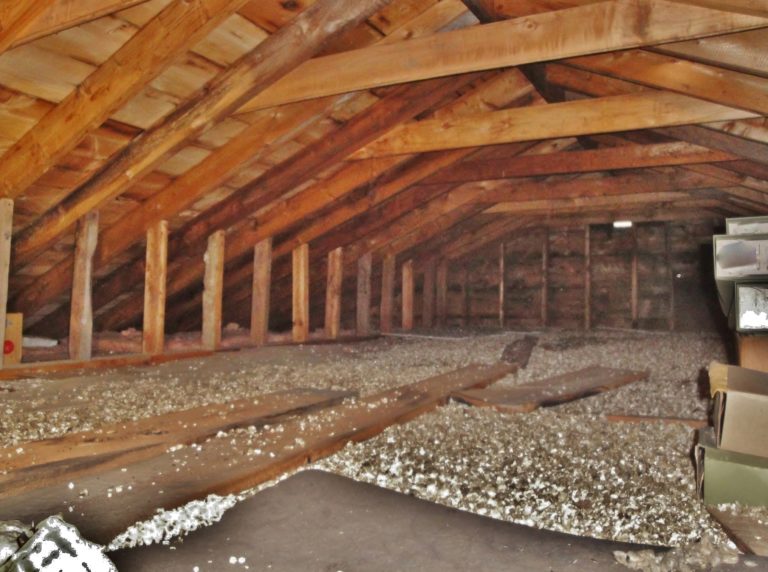What is Proper Attic Ventilation?
Understand the parts and pieces that contribute to proper attic ventilation so that you can better cool down the space and protect your roof all year long.
Homeowners don’t typically think about the ventilation in their attic. At best, it’s a place to shove holiday decorations and outgrown clothes until someone needs them. However, it plays a critical role in many aspects of day-to-day life in the home. Having the proper amount of ventilation in your attic can have a positive effect on the lifespan of your roof, the well-being and comfort of your family, your future costs for home repairs, and how much you pay in energy costs.
How Attic Ventilation Works
Ventilation typically involves intake vents down low along the soffits in an unfinished attic and exhaust vents up high at the top or roof ridge. It allows for a constant flow of air through the room. Through the soffit vents, cooler outside air is drawn in and wet, humid air that migrates through the vents exits along the roof ridge to the highest point.
Why Do Attics Need to be Ventilated?
In terms of comfort, having the heat go up to your attic sounds good at first. At least it’s not down where you live, right? The problem is that without proper attic ventilation, most of the hot air stops under your roof. As more hot air goes upward, it stacks below the air that’s already there. Once all the attic air is heated, the rooms below it begin to feel the heat, as well.
In terms of cost, the extra heat that’s trapped inside your house forces your air conditioning system to work harder. As a result, your energy bill is higher than it should be.

All the extra heat and lack of air movement in the attic can indirectly cause structural issues, adding to your costs over time. Lack of attic ventilation can lead to problems such as:
- Excessive moisture that creates a good environment for mold and wood rot.
- Expansion and contraction of wood that damages your subroof and shingles.
- Ice dams in the winter that can cause water damage as they melt.
The good news is that these problems can be avoided by fixing the ventilation issues in your attic. Correctly placed vents release hot air through the roofline while cooler air comes into the attic through the soffits. An attic fan can go a long way toward keeping air flowing properly.
Spotting the Signs of Improper Ventilation
A subpar ventilation system can create a host of issues that can manifest in a number of ways. Here are some subtle and not-so-subtle things to watch out for:
- An unexplained uptick in your household heating and cooling costs, which can happen if your attic insulation gets wet and loses its effectiveness.
- A noticeable buildup of ice along your roof edge during the winter months.
- A wavy or rippled appearance to your home’s roofline and shingles that’s caused by warping of moisture-damaged decking underneath.
- An increase in discomforting allergy symptoms or respiratory illnesses among your family members, which may be related to the spread of fungi spores through your indoor air supply from mold growth in your attic.
- Dampness, water stains or frost on the attic side of your roof sheathing, or any evidence of deterioration and decay of the roof’s structural supports.
- Rust and corrosion on metal materials in the attic, such as nail heads, electrical boxes, light fixtures, and HVAC system components.
- More frequent HVAC repairs as heating and cooling equipment that’s under a heavier workload can become more prone to breakdowns or even premature failure.
If you decide to look for these signs on your own, please remember that your safety is the most important thing. Rather than climbing up on the roof, walk around the outside of your home and look up from ground level using a pair of binoculars. If you decide to head up to the attic, make sure that the space is well-lit, that you have a sturdy walking path, and that you are wearing the appropriate protective gear.
What to Do About a Poorly Ventilated Attic
If you see any of the previously mentioned warning signs or have any concerns, it’s wise to have your attic inspected. Jersey Shore Crawlspace Enhancement specialists have been fixing problems within attics and crawl spaces for over 20 years. We know how to do the job quickly and correctly the first time. Give us a call so we can schedule an evaluation to get your attic’s air flowing the way it should be.
